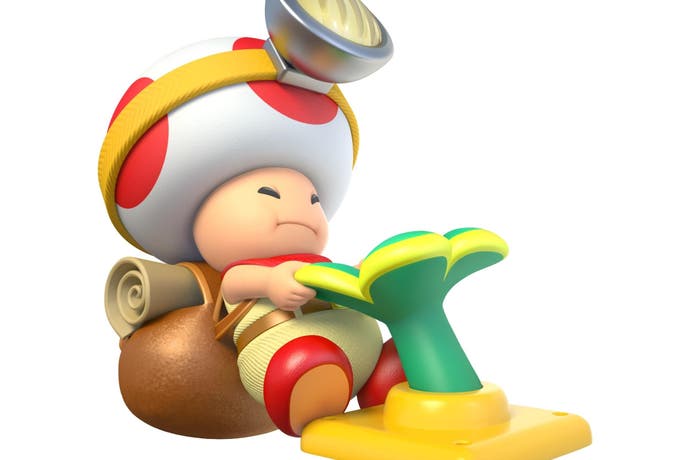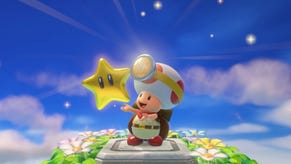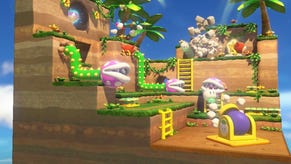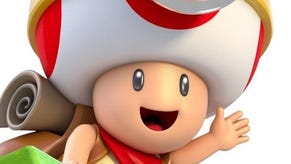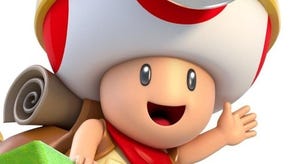Captain Toad: Treasure Tracker review
Mushroom with a view.
Nintendo's Tokyo studio seems to have a thing about making miniature worlds. Since Super Mario Galaxy's wraparound planets, the team has loved to create game levels as if they were tactile, toylike pocket universes that you could pick up and turn over in your hands. This urge is expressed in the level designs, with their meticulous, playful, tightly condensed explorations of 3D space. It's present in the games' toothsome aesthetic, too: the shiny, candied surfaces, the plump solidity of the little characters scurrying about, the pleasing metallic clicks and clunks of their snap-to systems and clockwork mechanisms. Nintendo has always conceived of video games as toys, but seldom so literally as in EAD Tokyo's games, which it's so easy to imagine coming in large, colourfully illustrated boxes with assembly instructions included, their components packed neatly together in little cellophane bags.
So it is that the greatest pleasure in Captain Toad: Treasure Tracker is the moment you load up each cuboid level and spin the camera around it, studying it from every angle, looking for windows on secret chambers and piecing its puzzles together in your mind's eye. It's a pleasure the game offers up exactly 64 times: not too few, but certainly not too many either. Based on the Captain Toad bonus levels from last year's Super Mario 3D World, this is a modest and none too difficult puzzle-platformer that offers half a dozen hours of amiable and adorably presented problem-solving. Its UK street date of 2nd January having now been widely broken, it would make a fine Christmas treat - if a slightly disposable one for its £30 price tag.
The idea is just the same as it was in 3D World. Captain Toad - an unusually adventurous specimen of Princess Peach's cute yet cowardly mushroom proletariat, as evidenced by his head torch and backpack - must solve spatial puzzles and avoid hazards to reach the star in each of the compact levels. There are gems and coins to gather too, as well as additional challenges to beat, such as finding a hidden golden mushroom or completing a level without taking damage.
The systems, enemies and obstacles are mostly familiar from Mario's world, but Captain Toad's perspective on them is very different. For starters, he can't do the one thing Mario is most famous for: he can't jump. (Delightfully, Treasure Tracker allows him to deal with enemies by rehabilitating the turnip-throwing mechanic of the US version of Super Mario Bros. 2 - the black sheep of the Mario family, but a good game in its own right.) Furthermore, where Mario's games offer a fixed perspective on a diorama of action, Treasure Tracker allows you to rotate the camera freely around levels that have been bunched up into tight little knots, deliberately using perspective to obscure vital clues.
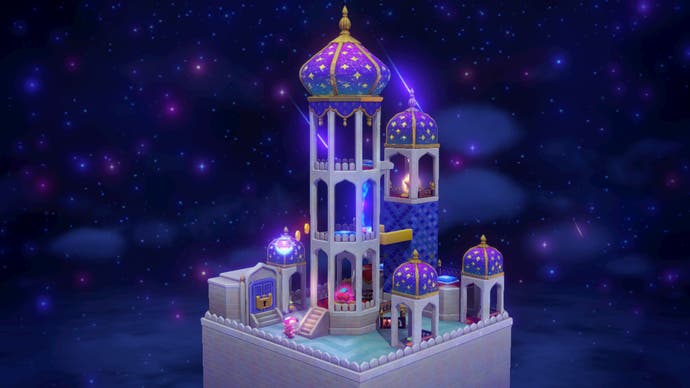
As a way to turn the precepts of the Mario games - already known for their restless innovation - upside down and inside out, then, Captain Toad borders on genius. With its bite-sized, very conceptual levels, it's also a perfect format for the Gatling gun of gameplay ideas that is the EAD Tokyo design team. So making a standalone game out of the surplus ideas it generated must have seemed like a no-brainer to Nintendo. But it has to be said that Captain Toad made more sense in the context of the game it was subverting. Standing alone, a couple of flaws are exposed.
The first is the odd relationship between the game and its camera. Nintendo's games usually avoid twin-stick control schemes and seek to make the camera invisible, removing every barrier between the player and the game. Captain Toad does the opposite. Deliberately so, to be fair; constantly tweaking your viewing angle, using the right stick or by angling the GamePad, is part of the gameplay as you explore the intricate levels' secrets. But it can be a pretty fiddly and distracting part of the gameplay. It feels fussy and cumbersome in a way so few Nintendo games do. The standard, zoomed-out view is great for viewing the level but often uncomfortably distant for precise platforming or avoiding enemies; you can zoom in with a button-click, but this perspective is too tight to be useful in the long term.
The game displays on both the GamePad and TV screens simultaneously, and sometimes it feels more natural to look down upon these miniature worlds between your hands, especially in those levels that require you to tap blocks of scenery on the touchscreen to move them. On some mine-cart levels, the GamePad adopts a first-person perspective for a gyroscopically-assisted turnip shooting gallery, which is a fun palate-cleanser. But often you find yourself flitting restlessly between the two screens, not knowing which you're supposed to be looking at, because neither feels quite right; just as you constantly click in and out of zoom and search fruitlessly for just the right angle on the action.
This is the most minor kind of imperfection, a barely perceptible buzz of cognitive dissonance - and it's also inherent in an otherwise clever game design, rather than being a failing of execution. If this game weren't made by Nintendo, it would hardly be worth mentioning. But it is, and with Nintendo a feeling that the controls, presentation and hardware are getting between you and the game is the last thing you expect.

Perhaps it's a good thing, anyway. That Treasure Tracker exists at all is a welcome sign that the Nintendo of today is a little more willing to experiment, to extemporise, to embrace smaller horizons; to take an idea, play around with it, turn it around in a year and move on, rather than make us wait another three years for another flawless masterpiece. More and fresher games are certainly the order of the day for Wii U - and it's not like Captain Toad doesn't offer manifest delights to make up for its slight gaucheness, from concepts for later levels that will make you dizzy right down to the perfectly realised metallic pattering sound that our hero makes as he scampers up the rungs of a ladder.
You could argue that, as pure spatial puzzle games, Intelligent Systems' Pullblox series (known as Pushmo in North America) is more sophisticated and challenging and offers far better value for money - and you'd be right. It's an unfair comparison, though, because Pullblox is purist puzzling, while Captain Toad is a hybrid: it's both puzzle game and platform game, and also neither of those things. It's closest in spirit to Nintendo's classic 1994 version of Donkey Kong for Game Boy, which went back to platform games' single-screen roots and then developed them in a different, more cerebral direction. (Mario vs Donkey Kong, the excellent 2004 Game Boy Advance release, is another recommended text for students of this sub-genre.)
Perhaps aiming to satisfy a younger audience, Treasure Tracker prefers to drop in a colourful boss-fight or format-breaking set-piece than to push the puzzle designs as hard as they can go. Solving most of these levels is more a matter of following your nose than exercising your brain. Captain Toad also doesn't achieve as reliably perfect a synthesis of puzzle and platforming as Game Boy Donkey Kong did, occasionally failing to fully scratch either itch - though at other times it finds something truly original in the space between them. And there is always that moment when you load up a new level and spin it, beholding another perfect microcosm, made just for you. 18 years on from Super Mario 64, Nintendo's designers are still going further in their exploration of the third dimension than almost anyone else.
